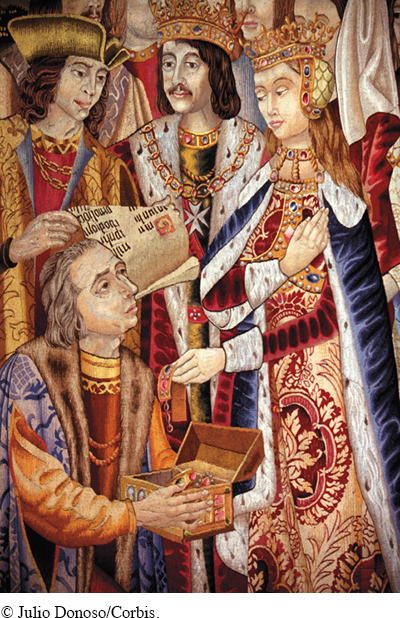What factors led to European exploration in the fifteenth century?
> CHRONOLOGY
Mid-Fourteenth Century
|
1415–1460
|
1480
|
1488
|
1498
|
Historically, the East—not the West—attracted Europeans. Europeans did not venture across the North Atlantic until around AD 1000, when Norsemen founded a small fishing village at L’Anse aux Meadows on the tip of Newfoundland that lasted only a decade or so. When the world’s climate cooled, choking the North Atlantic with ice, the Norse left and other Europeans remained unaware of North America. Instead of looking to the West, wealthy Europeans developed tastes for luxury goods from Asia and Africa, and merchants competed to satisfy those desires. As Europeans traded with the East and with one another, they acquired new information about the world they inhabited. A few people—sailors, merchants, and aristocrats—took the risks of exploring beyond the limits of the world known to Europeans. Those risks could be deadly, but sometimes they paid off in new information, new opportunities, and eventually the discovery of a world entirely new to Europeans.

Understanding the American Promise 3ePrinted Page 28